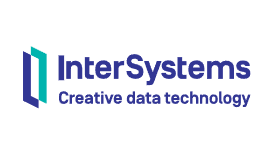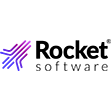
InterSystems Seeks Growth, Visibility As It Expands Data Reach

(ZinetroN/Shutterstock)
You can be forgiven if you’re not familiar with InterSystems Corp., the Cambridge, Massachusetts database company that was founded over 40 years ago. The company has kept a low profile over the years as it’s grown its OEM relationships into a nearly $1-billion business. But if the privately held company is successful with its new approach to data management, that is likely to change.
Founded by Phillip T. Ragon in 1978, InterSystems became the most prominent of the M-technology vendors, so-called because they used MUMPS, or the Massachusetts General Hospital Utility Multi-Programming System. MUMPS was a high-performance key-value database with an integrated programming language that had the advantage of enabling multi-tasking, which at the time (late 1960s and early 1970s) was largely limited to mainframes. Neither the early Unix systems nor minicomputers of the day had learned that trick yet.
In the 1990s, Ragon led InterSystems to acquire many of its M-technology competitors, thereby becoming the dominant provider of the database, which today is used by more than half of the country’s hospitals. InterSystems largely worked behind the scenes as an OEM technology provider for application developers, including electronic medical record (EMR) giant Epic Systems, which has been an InterSystems customer for 40 years, and remains its biggest customer today.
While InterSystems has found success selling the technical descendants of MUMPS (which was retired long ago) to healthcare companies, it is now branching out into other industries and looking to sell its database tech in new ways, says Scott Gnau, the head of data platforms at InterSytsems.
“We’re the data engine behind a lot of familiar names, and that’s always been our role,” Gnau says. “We’re very good at OEMing and letting the application provider do what they need to do to build out the application, and let us handle the heavy lifting on the data management and scale out and scale up and stability.”
But that’s changing, Gnau says. With the changes wrought by cloud computing and InterSystems’ expansion into financial services and other industries, the company is finding that a little more name recognition isn’t a bad thing.

InterSystems’ IRIS databases are used to store information about 65% of American hospital patients (hxdbzxy/Shutterstock)
“We’re starting to get a little bit more broadly known,” the former Teradata and Hortonworks executive tells Datanami. “As people are starting to consume services in the cloud and starting to look for different building blocks to build their applications, I think we are in fact starting to get a little bit better name and brand recognition because of the services we offer in that space, kind of this new class of application developers.”
The company’s flagship product, a database called IRIS, is key to the company’s evolving strategy. As Gnau describes it, IRIS’ database kernel is “truly multi-model.” It’s a key-value store at its core, enabling IRISto store everything from transactional data to XML files and even sound files in a single integrated database, thereby minimizing the need to duplicate and move data. Support for SQL, Python, and Java enable access to a broad swath of developers, for either OLAP or OLTP systems.
In the old days, companies might have served data to multiple applications from the same database. These days, each application might use multiple specialty databases to get the job done. InterSystems sees IRISgaining traction by consolidating these disparate databases into a single instance, including consolidation of transactional and analytical workloads into one “translytical” system.
“In one of the competitive wins we had in financial services, our client said ‘Hey we’re going to build this thing in the cloud. We’re going to need a key-value store, a relational database, and we’re going to need a caching layer,’” Gnau says. “And all of a sudden, they had five services that they had to cobble together. We said ‘No, we can do that in a single copy.’ So there was obviously a TCO [total cost of ownership] advantage and support advantage.”
A multi-model database not only simplifies data management, Gnau says, but it also increases reliability, since there are fewer seams between the various products that were stitched together. Invariably, life will throw you disruptions, which will cause stress at these integration points.
Of course, InterSystems isn’t the only database vendor going the multi-model route. NoSQL vendors like Aerospike, Couchbase, Datastax, MarkLogic, and Redis, and relational database vendors like EnterpriseDB, Oracle, and SAP can all store and serve data in multiple ways.
But Gnau says IRISholds an big advantage over those thanks to its “secret sauce,” which is a continuation and a distillation of the technological lessons learned from MUMPS through intermediate products Cache and Ensemble directly into IRIS’s launch in 2018.
“I think about where some of those models were first conceptualized, in 8-bit compute, 16-bit compute environments, where you need to be efficient if it was going to live,” Gnau says. “We’ve taken that efficiency, but we’ve moved into all the modern footprints. We’ve retained the efficiency, but we’ve gained that scale. Again, it’s paid off very nicely for us, where we can show a really predictable footprint as our clients need to scale.”
The company has embraced the concepts around data fabrics and data meshes, which will be useful for IoT and Industry 4.0 engagements. For example, the company is looking to enable oil exploration companies to run Python-based machine learning algorithms directly on data stored in its database, while also allowing results to be pushed to a centralized data store.
“You may want to process some data locally. You may want to process some data centrally,” Gnau says. “I [may] want to connect the data from all my oil rigs so I can continually train my sophisticated machine learning model to predict outages or understand maintenance schedules. And I [may] want to take that same model and push it out locally to them in real time, so that I can get quicker reason to things that are changing. That’s a data mesh and data fabric together, and our technology supports that, because we can have multiple different clusters of storage and multiple different clusters of applications, and we can connect them with ECP, our enterprise cache protocol, and you can make those things configurable based on the footprint that you desire.”
As database development and runtimes shift to the cloud, the leaders of InterSystems, including CEO Ragon, sense an opportunity to take some market share. The company has invested in benchmark tests, which show the ability to scale linearly. It has started participating in hackathons, which improves engagement with its community of 11,000 developers. And it has also started working with analyst groups like Gartner and Forrester, and been featured in those groups’ research reports.
Along the way, it’s continuing its march into other markets, including financial services, supply chain management, and Industry 4.0 applications. All that is contributing to building momentum for the 44-year-old company, which has been profitable every year of its existence and which is nearing sales of $1 billion, according to Gnau.
“We’ve been working to get the word out a little more as we move into these new markets,” Gnau says. “So we’re really trying to shift ahead where I think the lines are blurred between being an OEM partner for an application development company that’s selling an application and an end user who wants to build an application with clod-based services. As those lines start to blur, I think it will become more important for us to become more known.”
Related Items:
CDOs Must Shift to Offense, Survey Finds
Three NoSQL Databases You’ve Never Heard Of
ETL Slowing Real-Time Analytics, Survey Finds







































